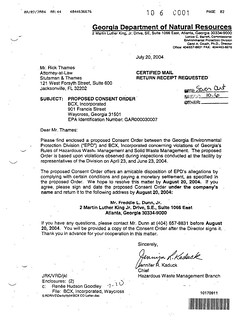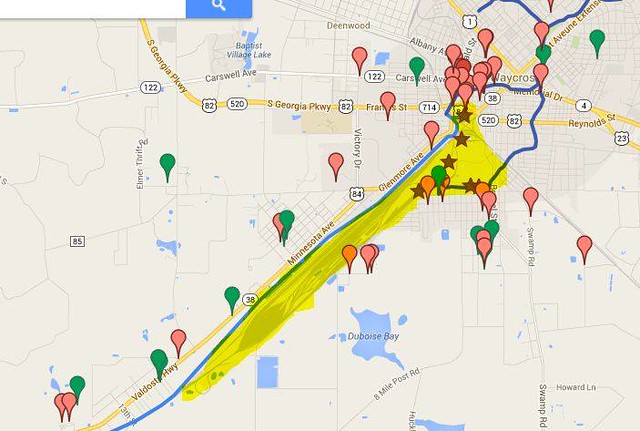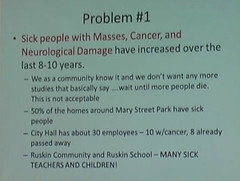CSX was involved directly in the Seven Out contamination, storing hazardous water that leaked: and then that water was apparently shipped to the Pecan Row Landfill in Lowndes County. This is in addition to the the CSX trichloroethylene groundwater contamination dating back to 2000 and earlier.
According to a letter from Georgia Department of Natural Resources to BCX, Inc. of 20 July 2004, EPA Identification Number: GAR000030007,

- Twenty-seven tanks of wastewater were stored at the facility. Four portable tanks were storing the excess capacity of wastewater next door on property owned by CSX Transportation. These portable 10,000-gallon tanks were not labeled to indicate their contents;
- According to a BCX representative, one of the portable 10,000-gallon tanks had a gasket failure on the forward manhole which caused the release of an unknown substance onto the ground at the site owned by CSX Transportation;
- Dead vegetation was observed in a 15 feet by 30 feet area downgradient of the tank that caused the release;
- A yellowish-green substance was observed on the ground between the portable tank that had the release and another portable tank adjacent to it. There was also dead vegetation observed between these two tanks; and
And GA EPD tested the soil and found something the document doesn’t specify, but whatever it was was enough that: Continue reading











